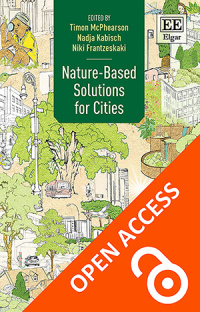
Hardback
Handbook on Aging and Place
Moving away from studies of aging in place, this forward-looking Handbook focuses on aging and place, offering a broader scope and more nuanced, complex and enlightening understanding of these two intertwined universals of human experience. Not only examining the latest literature, the chapters also challenge current thinking on the many intersections, opportunities and issues around place and aging that need to be addressed through policy and practice.
More Information
Contributors
More Information
Moving away from studies of aging in place, this forward-looking Handbook focuses on aging and place, offering a broader scope and more nuanced, complex and enlightening understanding of these two intertwined universals of human experience.
Innovative and thought-provoking, the Handbook brings together an international range of top scholars from gerontology and geography to provide state-of-the-art assessments of the topic. Not only examining the latest literature, the chapters also challenge current thinking on the many intersections, opportunities and issues around place and aging that need to be addressed through policy and practice. The Handbook is split into four key sections: looking at different perspectives, core places of aging, making and re-making places for aging, and envisioning a future for the study of aging and place.
This Handbook invites students, scholars, practitioners and policy makers to consider a fresh examination of aging and place, offering theoretical, empirical and policy-relevant content. It will be of particular interest to those studying and working within gerontology, human geography, sociology, urban planning and environmental psychology.
Innovative and thought-provoking, the Handbook brings together an international range of top scholars from gerontology and geography to provide state-of-the-art assessments of the topic. Not only examining the latest literature, the chapters also challenge current thinking on the many intersections, opportunities and issues around place and aging that need to be addressed through policy and practice. The Handbook is split into four key sections: looking at different perspectives, core places of aging, making and re-making places for aging, and envisioning a future for the study of aging and place.
This Handbook invites students, scholars, practitioners and policy makers to consider a fresh examination of aging and place, offering theoretical, empirical and policy-relevant content. It will be of particular interest to those studying and working within gerontology, human geography, sociology, urban planning and environmental psychology.
Contributors
Contributors include: Addie Abushousheh, Keith A. Anderson, Gavin J. Andrews, Sol Baik, Catherine Bigonnesse, Joseph Asumah Braimah, Jane Bringolf, Tine Buffel, Vanessa Burholt, Margaret Calkins, Melissa Cannon, Phillippa Carnemolla, Habib Chaudhury, Yang Cheng, Tara Coleman, Malcolm Cutchin, Kate de Medeiros, Keith Diaz Moore, Patty Doran, Polina Ermoshkina, Jessica Finlay, Stephen M. Golant, Carri Hand, Michelle D. Hand, Susanne Iwarsson, Migette Kaup, Amanda J. Lehning, Gabriella Meltzer, Christine Milligan, Frank Oswald, Chris Phillipson, María-Eugenia Prieto-Flores, Mark W. Rosenberg, Graham D. Rowles, Elizabeth Russell, Kishore Seetharaman, Tess E. Schleitwiler, Philip Taylor, Hans-Werner Wahl, Kieran Walsh, Anna Wanka, Richard Ward, Janine Wiles, Sophie Yarker, Jarmin Yeh




